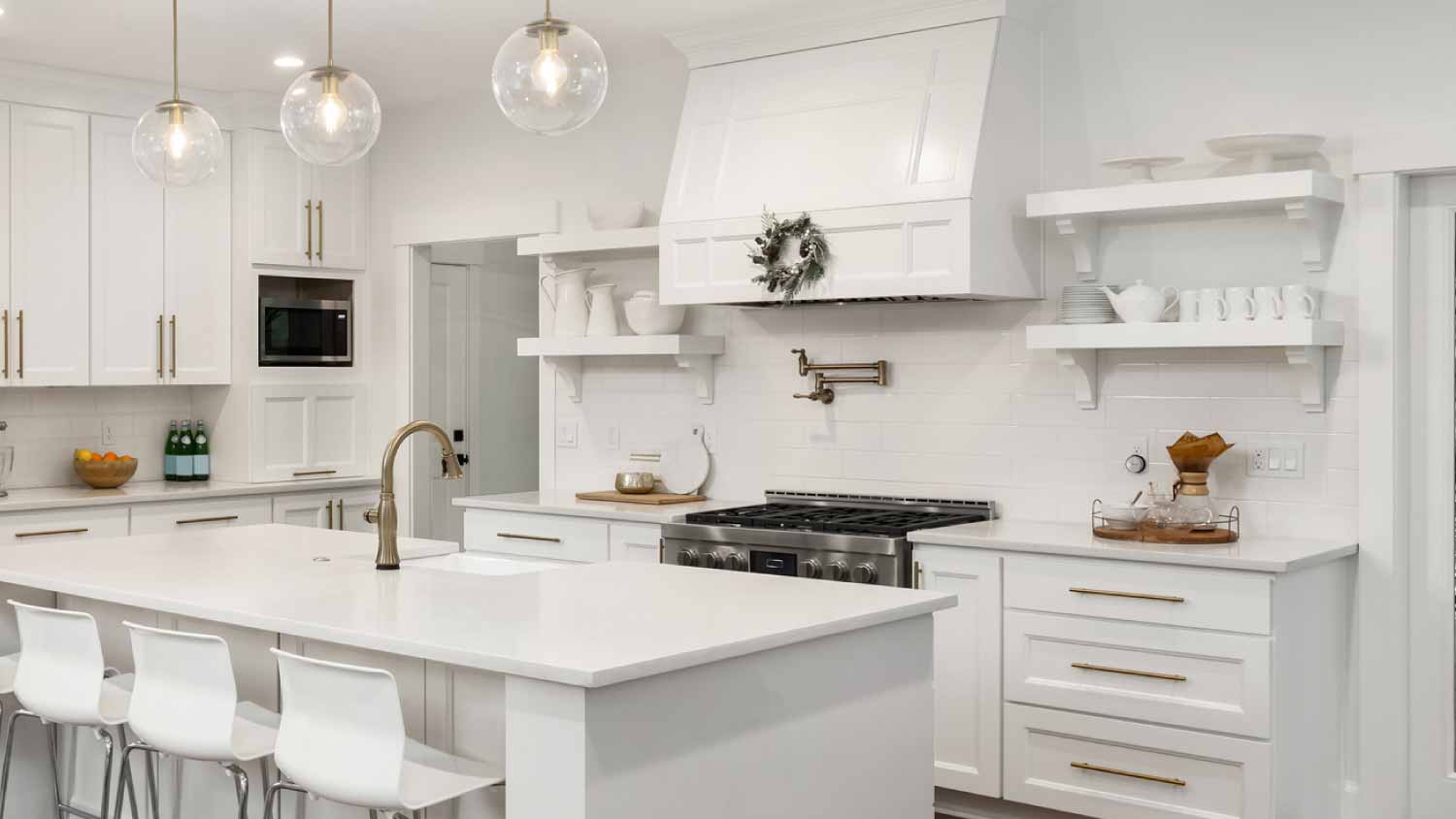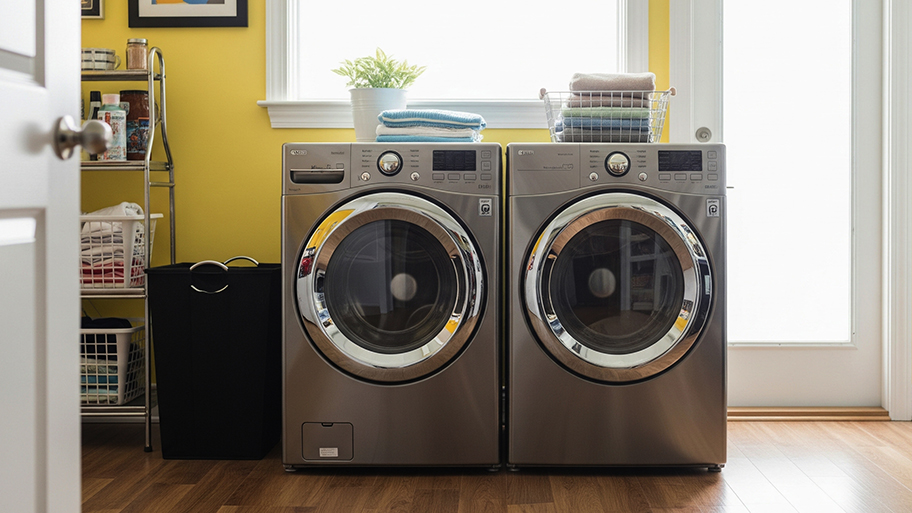
Looking to keep warm this winter without the high utility bills? Use this pellet stove installation cost guide to see what a natural heating solution will cost.
Pot filler installation costs on average $1,650 if you have the existing plumbing, but expect to pay $3,000 or more if you need new pipes.


The scope of the project is the number one cost factor because this installation requires breaking into the wall to reroute the plumbing around appliances.
The faucet type can slightly affect the price, with double-jointed and swing-out models offering more utility.
Additional material costs include plumbing modifications, replacing the backsplash, and adding shut-off valves.
Due to the complex nature of rerouting pipes, a professional plumber is needed to do the work and prevent water damage.
Pot fillers, also called pasta arms, might cost a pretty penny but they offer immense utility for home chefs. Even strong cooks have a hard time transferring large pots from the sink to the stove. It’s not good for your wrists and can even be dangerous, which is why many choose to spend an average of $1,650 installing a pot-filling faucet. These additions provide amazing functionality and offer a certain luxe element to a kitchen, but you might be left wondering, what is the true cost of installation?
A perfect kitchen would have plumbing directly behind the stove, and all you need to do is add the faucet. The reality is not quite as rosy, often requiring extra plumbing work and removing your backsplash.
While the type of faucet you choose factors into the cost, the work required to install a pot filler takes the lion’s share of the budget. While a bathroom faucet is built into an existing fixture, adding a pasta arm often requires reworking the plumbing since it is usually installed directly into the wall behind the stove.
One of the reasons you see pasta arms much more often in restaurants than in homes is that restaurants have exposed plumbing, which makes rerouting it much easier than through a wall at home. Restaurants also use much larger pots—such as those for stock—and it may not even be possible to lift a full pot from the sink and transfer it to a stove.
The cost to add a pasta arm in a home depends on the work that’s required. The more complex the project, the more tools, materials, expertise, and time are required.
| Work Required | Average Cost |
|---|---|
| Faucet only | $280 |
| Faucet with minor plumbing changes | $400 |
| Faucet with major plumbing changes | $1,200 |
| Faucet, major plumbing, minor structural changes | $1,900 |
| Faucet, major plumbing, major structural changes | $3,000+ |
Before thinking about installation, you need to choose which type of faucet you want to install. There are three types, each with their pros and cons. A fixed arm won’t allow you to fill separate pots in multiple locations on the stove, requiring you to lift and place the pot on the correct burner.
Swing-out and double-jointed arms allow you to fill the pot where you need it. They aren’t much more expensive than a fixed arm pot filler, and the process to install them is identical, which is why the most common type of faucet filler is double-jointed.
Now that you have the faucet, you will need additional materials if you’re performing more substantial work like rerouting plumbing, installing shut-off valves, or replacing damaged backsplash. These increase the budget, but if you don’t have plumbing lines running to the right places, these costs are unavoidable.
| Additional Materials | Average Cost |
|---|---|
| Shut-off valve | $19 |
| Wall reinforcements | $40 |
| Copper pipe fittings | $28 |
| 8 feet of copper plumbing pipe | $58 |
| Screws, anchors, adhesives | $20 |
| Backsplash (material and labor) per square foot | $55 |
Professional plumbing experts near you will cost between $45 and $200 per hour. This is a wide range, but it covers everything from a basic pipe installation to running new water lines from a different room and through walls to where your stove is.
The time required to install a pasta arm varies widely. If all you are doing is changing the faucet, you may not need a plumbing pro at all. But if you need to rip out all your backsplash, make a structural change, replace a wall, and route new plumbing around electrical, that is not a DIY job, and you need to call a pro.
Unless you can swap out the faucet or have previous professional plumbing experience, this isn’t a DIY-friendly project. You’ll be working with water lines close to high-voltage appliances, and any sort of bad plumbing connection could cause significant water damage to your walls and floors.
A local plumbing expert will do the work, but more importantly, they will save you from doing future work in the form of costly repairs. Installing a pasta arm can be pricey, but not nearly as much as replacing a wall or having to fix electrical circuits.

The two pillars of cost are labor and materials. However, there are some creative ways to bring both of those down:
Instead of using full copper faucets, find copper-plated versions.
Consider adding a pot filler faucet during a remodel or kitchen facelift, as opposed to a standalone project.
Install a backsplash that you can cut through easily without requiring total removal.
Consider a pasta arm in the wall where the plumbing would be easiest, even if it’s not directly over the stove.
Home is the most important place on earth, which is why Angi has helped more than 150 million homeowners transform their houses into homes they adore. To help homeowners with their next project, Angi provides readers with the most accurate cost data and upholds strict editorial standards. We extensively research project costs to develop the pricing data you see, so you can make the best decisions for you and your home. We rely on reputable sources, including the U.S. Bureau of Labor Statistics, academic journals, market studies, and interviews with industry experts—all to ensure our prices reflect real-world projects.
Want to help us improve our cost data? Send us a recent project quote to [email protected]. Quotes and personal information will not be shared publicly.
From average costs to expert advice, get all the answers you need to get your job done.

Looking to keep warm this winter without the high utility bills? Use this pellet stove installation cost guide to see what a natural heating solution will cost.

A wood stove can add warmth and ambiance to your home, but is it in your budget? Discover average wood-burning stove installation costs in this guide.

Discover the cost to install washer and dryer hookups. Learn about price factors, labor, materials, and tips to save on your laundry room project.

Dealing with a clogged dishwasher? Use this guide on how to drain a dishwasher to empty it and clear out any debris that’s causing a backup.

Does your washer sound like it wants to leave your house? You can fix this issue in just a few minutes. Keep reading to learn how to balance a washing machine.

Let precision in the kitchen protect you from water contamination. Follow these simple steps for installing a dishwasher air gap.